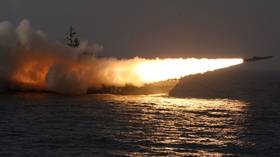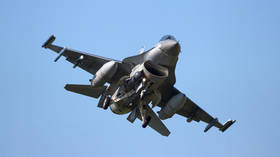This mosquito stings like hell: Watch Russian sailors hone SUPERSONIC missile-firing skills

The crews of two guided missile corvettes of the Russian Black Sea Fleet tested their skills during a test-fire of their primary weapon, the supersonic anti-ship missile P-270 Moskit.
The Tarantul-III-class corvette Ivanovets and her sister ship R-60 took part in a naval exercise, which included a successful missile attack on a target some 55km away, according to a report by Zvezda TV, the official news channel of the Russian Defense Ministry.
The 500-ton, 56 meter-long ships are part of the legacy corvette fleet that remains in service in three of the four Russian fleets.
The P-270 Moskit (“mosquito” in Russian) ramjet supersonic missile is the primary armament of the model, meant to destroy enemy warships up to 90km away. The projectile flies close to the surface to avoid early radar detection and relies on its high speed and rapid maneuvers during the final phase to beat the target’s anti-missile defenses.
A Tarantul-class corvette carries four such missiles, each of which has 150kg of explosives in its warhead – enough to sink a 20,000 ton ship on a good hit. During exercises a dummy is commonly used, so that the accuracy of the attack can be assessed.
Like this story? Share it with a friend!













